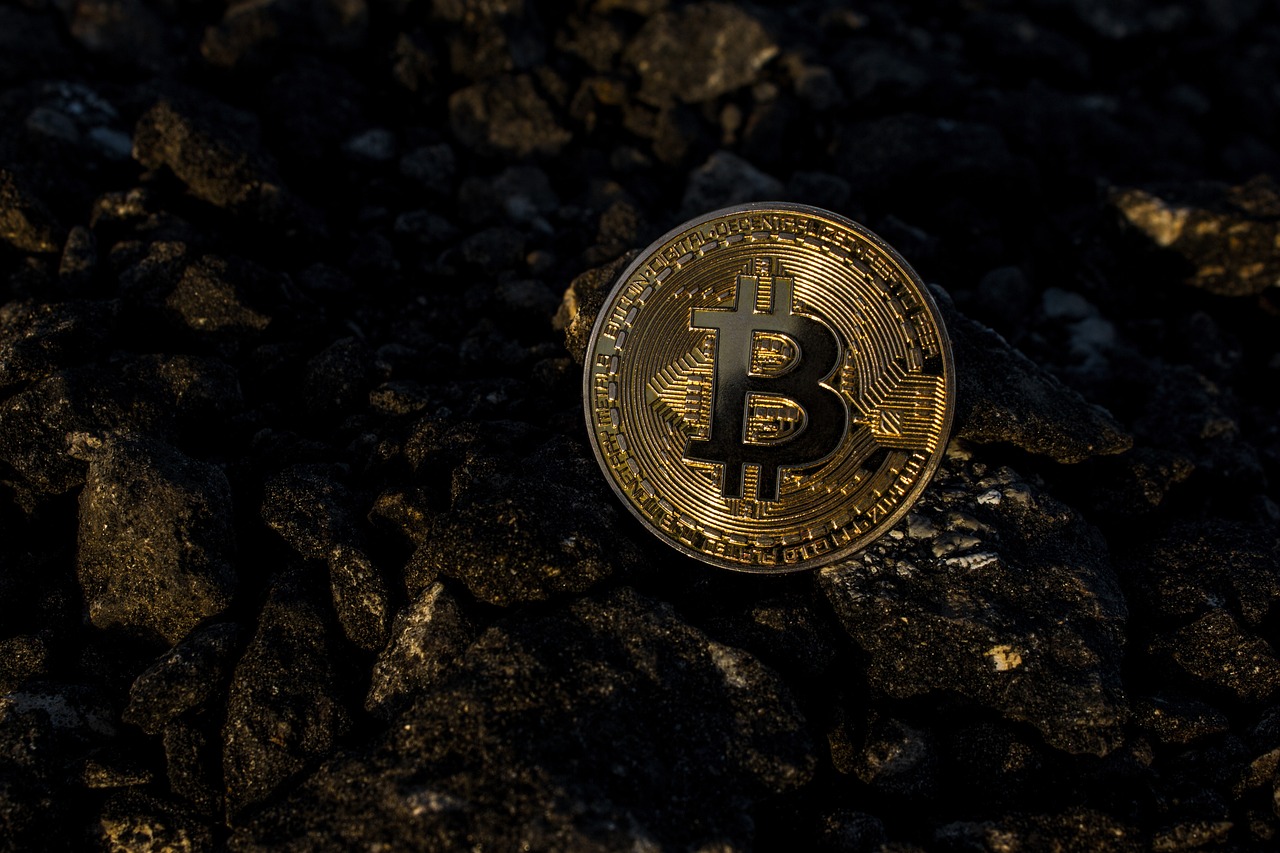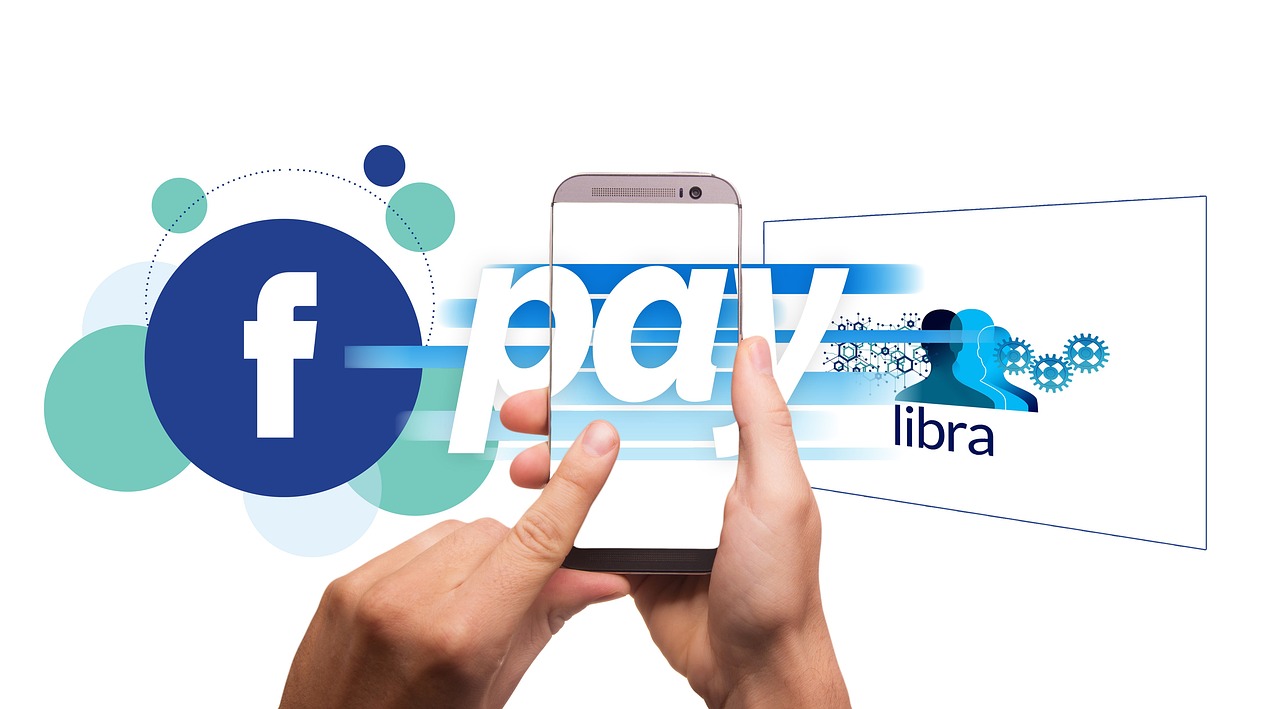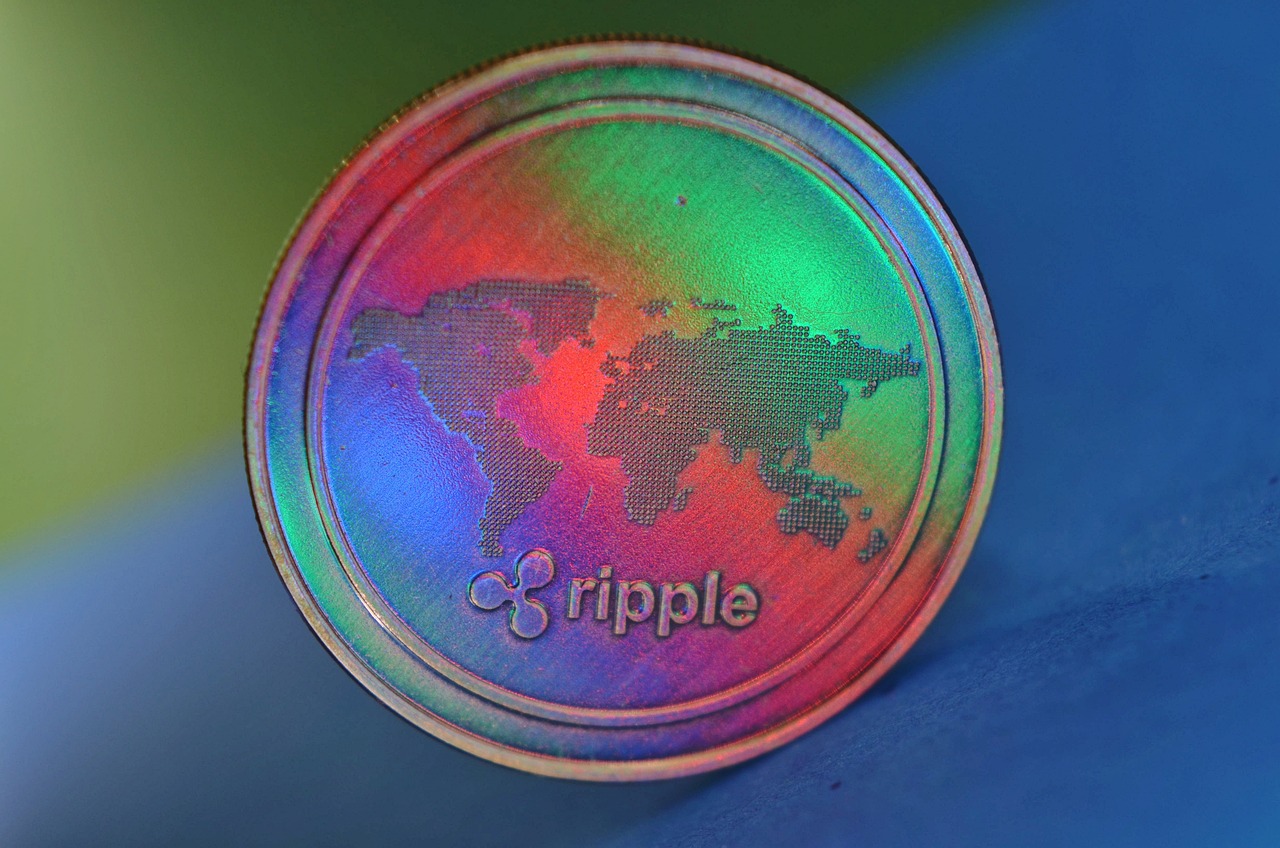Chainlink - The Decentralized Oracle Solution
In the rapidly evolving world of blockchain technology, Chainlink stands out as a groundbreaking solution that connects the dots between smart contracts and real-world data. Imagine a world where digital agreements can automatically execute based on real-time information, such as stock prices or weather conditions. This is precisely what Chainlink achieves through its innovative decentralized oracle network. By acting as a bridge, Chainlink enhances the functionality of blockchain applications, making them more reliable and versatile.
The beauty of Chainlink lies in its ability to bring off-chain data into the blockchain ecosystem without compromising the integrity or security of the smart contracts. This capability opens up a plethora of possibilities for developers and businesses alike. Whether you are in finance, insurance, gaming, or any other industry that relies on data, Chainlink offers a robust framework that ensures your smart contracts can interact seamlessly with external data sources.
But what exactly makes Chainlink so special? Well, it's all about decentralization and trust. Traditional oracles can be prone to manipulation and single points of failure, which can jeopardize the entire blockchain system. Chainlink mitigates these risks by utilizing a network of decentralized nodes that work collaboratively to validate and verify data before it reaches the smart contracts. This decentralized approach not only enhances security but also builds trust among users, making Chainlink a preferred choice for developers looking to create reliable decentralized applications.
As we delve deeper into the mechanics of Chainlink, we will discover how it aggregates data from multiple sources, ensuring accuracy and reliability. We will also explore the essential roles of node operators and the incentives that drive them to deliver high-quality information. In a world where data is often seen as the new oil, Chainlink is the refinery that ensures this oil is pure and ready for use in the smart contract engine.
Moreover, as blockchain technology continues to advance, the future of Chainlink looks incredibly promising. With its ability to expand the capabilities of decentralized applications, Chainlink is not just a tool; it is an essential component in the evolution of blockchain technology. So, whether you are a developer, a business owner, or just a curious individual, understanding Chainlink and its decentralized oracle solution is crucial in navigating the future of digital contracts and decentralized applications.
- What is Chainlink? Chainlink is a decentralized oracle network that connects smart contracts with real-world data, enhancing blockchain functionality.
- How does Chainlink ensure data accuracy? Chainlink utilizes a network of decentralized nodes to retrieve and verify data from multiple sources, ensuring that the information is accurate and reliable.
- What are the use cases for Chainlink? Chainlink can be applied across various industries, including finance, insurance, and gaming, to provide reliable data for decentralized applications.
- What security features does Chainlink have? Chainlink employs reputation systems and cryptographic proofs to ensure data security and integrity.
- What is the future of Chainlink? As blockchain technology evolves, Chainlink is set to play a pivotal role in expanding the capabilities of decentralized applications.

Understanding Decentralized Oracles
In the world of blockchain, the term decentralized oracles often pops up, but what does it really mean? Imagine you have a smart contract, a self-executing contract with the terms of the agreement directly written into code. Now, this contract can only operate based on the information it receives. That's where decentralized oracles come into play—they act as a bridge between the blockchain and the outside world. Without them, smart contracts would be like a car without fuel; they simply wouldn't go anywhere.
Decentralized oracles are crucial because they allow smart contracts to access real-world data, ensuring that they can execute based on accurate and timely information. This is vital for various applications, from finance to insurance and beyond. For instance, consider a smart contract that automatically pays out a sum of money when a certain event occurs, like a flight delay. The contract needs to know whether the flight is delayed, and that information must come from a reliable source. This is where decentralized oracles shine, providing the necessary data without the risk of manipulation or single points of failure.
To better understand their role, let's break down the concept of oracles:
- Data Retrieval: Decentralized oracles gather data from multiple external sources, ensuring that the information is comprehensive and not biased.
- Verification: They verify the data before it reaches the smart contract, adding an extra layer of security and trustworthiness.
- Execution: Once the data is verified, it triggers the execution of the smart contract, allowing it to fulfill its purpose.
Moreover, decentralized oracles are designed to be trustless. This means that users don’t have to trust a single entity to provide accurate data; instead, they rely on a network of nodes that collectively validate the information. This is akin to having multiple witnesses in a court case, each providing their account to ensure the truth is revealed. The more nodes that confirm the data, the higher the reliability. This decentralized approach mitigates the risk of fraud and ensures that the smart contracts operate as intended.
In summary, decentralized oracles are the unsung heroes of the blockchain ecosystem. They not only enhance the functionality of smart contracts but also ensure that these contracts can interact with the real world in a secure and trustworthy manner. As we continue to explore the capabilities of technologies like Chainlink, it's clear that understanding decentralized oracles is essential for grasping the future of decentralized applications.

How Chainlink Works
Chainlink operates as a decentralized oracle network, serving as a crucial link between blockchain smart contracts and real-world data. Imagine a bridge that connects two islands—one representing the blockchain and the other representing the vast ocean of real-world information. This bridge is built by a network of independent nodes that work together to ensure that the data flowing from the outside world is accurate, reliable, and secure.
When a smart contract requires data, Chainlink initiates a process to gather information from multiple sources. This is done through a series of steps:
- Request Creation: A smart contract sends a request for data to the Chainlink network.
- Node Selection: Chainlink selects a group of decentralized nodes based on their reputation and reliability.
- Data Retrieval: The selected nodes retrieve the requested data from various sources, ensuring diversity and reducing the risk of manipulation.
- Data Aggregation: Once the nodes have gathered the data, Chainlink aggregates this information to form a single, accurate result.
- Delivery: Finally, the aggregated data is sent back to the smart contract, allowing it to execute based on real-world conditions.
This entire process not only enhances the functionality of the smart contracts but also ensures that they operate in a trustless environment. By relying on multiple data sources and node operators, Chainlink minimizes the chances of a single point of failure, making the entire system robust and resilient.
One of the standout features of Chainlink is its ability to handle both on-chain and off-chain data. On-chain data refers to information that exists within the blockchain itself, while off-chain data comes from external sources. Chainlink acts as a bridge, allowing smart contracts to access off-chain data without compromising the security and integrity of the on-chain environment. This capability opens up a world of possibilities for decentralized applications (dApps), enabling them to interact with real-world events such as market prices, weather conditions, and even sports scores.
Additionally, the network incentivizes node operators to maintain high standards of accuracy and reliability. Each node's performance is monitored, and their reputation is built on the quality of the data they provide. This creates a competitive environment where nodes are motivated to deliver the best possible service, as their earnings and standing in the community depend on it.
In summary, Chainlink functions as a vital decentralized oracle network that connects smart contracts with real-world data, utilizing a network of independent nodes to ensure that data is accurate, reliable, and secure. By bridging the gap between on-chain and off-chain data, Chainlink enhances the capabilities of decentralized applications, paving the way for a more interconnected and functional blockchain ecosystem.
Here are some common questions regarding how Chainlink works:
- What is an oracle in blockchain? An oracle is a service that provides smart contracts with external data, allowing them to execute based on real-world events.
- How does Chainlink ensure data accuracy? Chainlink uses multiple data sources and node operators to aggregate information, minimizing the risk of manipulation.
- Can Chainlink work with any blockchain? Yes, Chainlink is designed to be blockchain-agnostic, meaning it can work with various blockchain networks.

Data Sources and Aggregation
In the realm of decentralized finance and blockchain technology, the reliability of data is paramount. Chainlink shines in this area by utilizing a sophisticated mechanism for . Think of Chainlink as a bridge that connects the isolated islands of blockchain networks with the vast ocean of real-world data. This bridge is not just built on one single path; rather, it consists of multiple routes that ensure a steady flow of accurate information.
Chainlink aggregates data from a diverse range of sources, which is crucial for minimizing the risk of manipulation. By pulling information from various reliable feeds, Chainlink ensures that the data fed into smart contracts is not only accurate but also trustworthy. Imagine trying to solve a puzzle; if you only have one piece, your vision is limited. However, with multiple pieces from different perspectives, the picture becomes clearer and more reliable.
To achieve this, Chainlink employs a network of decentralized nodes. These nodes are like vigilant sentinels, constantly retrieving and verifying data from numerous sources. This decentralized approach not only enhances the security of the data but also prevents any single point of failure. Each node acts independently, checking the validity of the information it receives, which contributes to the overall integrity of the data aggregation process.
Furthermore, the aggregation process is designed to filter out any outliers or erroneous data. When multiple nodes report similar data points, it strengthens the reliability of that information. This is akin to a jury reaching a unanimous verdict; the consensus among various nodes ensures that the data entering the smart contracts is both accurate and dependable.
In addition, Chainlink's architecture allows for the integration of both on-chain and off-chain data, providing a comprehensive view of the external environment. This capability is essential, especially in scenarios where real-time data is crucial, such as in financial markets, insurance claims, or gaming outcomes. By bridging the gap between on-chain security and off-chain data availability, Chainlink enhances the functionality of decentralized applications.
| Data Source Type | Description | Examples |
|---|---|---|
| Market Data | Information related to asset prices and trading volumes. | Cryptocurrency exchanges, stock market feeds |
| Weather Data | Real-time information about weather conditions. | Weather API services, meteorological stations |
| Sports Data | Live scores and statistics from sporting events. | Sports analytics platforms, official league APIs |
In conclusion, Chainlink's approach to data sources and aggregation is a game changer in the blockchain landscape. By harnessing the power of decentralized nodes and diverse data feeds, Chainlink not only enhances the reliability of smart contracts but also paves the way for innovative applications across various industries. The ability to access accurate, real-time data is what sets Chainlink apart, making it a cornerstone of the decentralized ecosystem.
- What is Chainlink? Chainlink is a decentralized oracle network that connects smart contracts with real-world data.
- How does Chainlink ensure data accuracy? Chainlink uses a network of decentralized nodes to verify data from multiple reliable sources.
- What types of data can Chainlink access? Chainlink can access various types of data, including market data, weather data, and sports data, among others.
- Why is decentralization important for data aggregation? Decentralization prevents manipulation and ensures that no single point of failure can compromise the data integrity.

On-Chain vs. Off-Chain Data
When diving into the world of blockchain technology, it's essential to grasp the difference between on-chain and off-chain data. Imagine on-chain data as the heart of the blockchain, where every transaction, every smart contract, and every piece of information is securely stored in a decentralized ledger. This data is immutable, meaning once it’s recorded, it cannot be altered or deleted. On the other hand, off-chain data acts like the brain, gathering information from the outside world and feeding it into the blockchain ecosystem. It’s essential for enhancing the functionality of smart contracts, allowing them to interact with real-world events.
Chainlink excels at bridging this gap between on-chain and off-chain data. By utilizing its decentralized oracle network, Chainlink can retrieve and verify off-chain data, ensuring that smart contracts have access to reliable information. For instance, think about an insurance smart contract that needs to verify whether a flight has been delayed. This information is not stored on the blockchain but can be accessed through off-chain data sources. Chainlink steps in to gather this data securely, ensuring that the smart contract executes based on accurate information.
Now, let's break down some key differences between on-chain and off-chain data:
| Feature | On-Chain Data | Off-Chain Data |
|---|---|---|
| Storage | Stored directly on the blockchain | Stored externally, outside the blockchain |
| Immutability | Immutable and tamper-proof | Can be altered or updated |
| Access Speed | Instant access within the network | May require additional time to fetch data |
| Security | Secured by the blockchain's consensus mechanism | Depends on the security of the external data source |
Understanding these differences is crucial for developers and businesses looking to leverage the power of smart contracts. By utilizing Chainlink's technology, they can ensure that their decentralized applications (dApps) are not only secure but also capable of responding to real-world conditions. This capability opens up a plethora of opportunities across various industries, from finance to gaming, where real-time data is essential for effective operations.
- What is the primary function of Chainlink? Chainlink connects smart contracts with real-world data, allowing them to execute based on accurate information.
- How does Chainlink ensure data accuracy? Chainlink utilizes a decentralized network of nodes to retrieve and verify data from multiple sources, minimizing the risk of manipulation.
- Why is the distinction between on-chain and off-chain data important? Understanding this distinction helps developers utilize Chainlink effectively, ensuring their smart contracts can access the necessary real-world data securely.

Node Operators and Incentives
Node operators are the backbone of the Chainlink ecosystem. These individuals or entities run the decentralized nodes that fetch, verify, and deliver data to smart contracts. But what motivates them to participate in this critical network? The answer lies in a well-structured incentive system designed to ensure that operators provide accurate and reliable data.
Each node operator has a reputation that is built over time based on their performance. This reputation is crucial because it directly impacts their earnings. The more reliable and accurate the data they provide, the more they can earn in LINK tokens, Chainlink's native cryptocurrency. Essentially, node operators are rewarded for their efforts in maintaining the integrity of the network. This creates a competitive environment where only the best operators thrive, as they are the ones who attract more clients and, consequently, more revenue.
The incentive structure is not just about monetary rewards; it also includes a system of penalties for those who fail to deliver quality data. If a node operator consistently underperforms or provides inaccurate information, their reputation suffers, leading to diminished earnings and potential exclusion from the network. This dual approach of rewards and penalties ensures that all participants are motivated to uphold high standards.
Moreover, the diversity of data sources that Chainlink connects to means that node operators can choose specific niches or industries to specialize in. For instance, some may focus on financial data, while others might provide information related to weather or sports. This specialization allows them to leverage their expertise, further enhancing the quality of the data they deliver.
In summary, the role of node operators in the Chainlink network is pivotal. They are incentivized not only by potential earnings but also by the desire to establish a solid reputation within the ecosystem. This intricate balance of incentives fosters a robust and reliable network, ultimately benefiting the entire Chainlink community.
- What is Chainlink? Chainlink is a decentralized oracle network that connects smart contracts with real-world data.
- How do node operators earn rewards? Node operators earn rewards by providing accurate and reliable data to smart contracts, which is compensated in LINK tokens.
- What happens if a node operator provides inaccurate data? If a node operator consistently provides inaccurate data, they risk losing their reputation and earnings within the network.
- Can anyone become a node operator? Yes, anyone can become a node operator, but they must be able to provide accurate data and maintain a good reputation.
- What types of data can Chainlink provide? Chainlink can provide a wide range of data, including financial, weather, sports, and more, depending on the specialization of the node operators.

Use Cases of Chainlink
This article explores Chainlink, a leading decentralized oracle network that connects smart contracts with real-world data, enhancing blockchain functionality and enabling a wide range of decentralized applications.
Decentralized oracles play a critical role in connecting blockchain networks with external data sources, ensuring that smart contracts can execute based on real-world information without compromising security or trust.
Chainlink utilizes a network of decentralized nodes to retrieve and verify data from multiple sources, ensuring accuracy and reliability. This mechanism allows smart contracts to function effectively in various applications.
Chainlink aggregates data from numerous reliable sources, minimizing the risk of manipulation. This process ensures that the information fed into smart contracts is accurate and trustworthy.
Understanding the distinction between on-chain and off-chain data is crucial for utilizing Chainlink effectively. Chainlink bridges the gap, providing access to off-chain data while maintaining on-chain security.
Node operators play a vital role in the Chainlink ecosystem. They are incentivized to provide accurate data, as their reputation and earnings depend on the quality of the information they deliver.
Chainlink's versatility allows it to be applied across various industries, including finance, insurance, and gaming. Its ability to provide reliable data enhances the functionality of decentralized applications. For instance, in the finance sector, Chainlink can facilitate secure and transparent transactions by providing real-time price feeds for cryptocurrencies, ensuring that smart contracts execute at the right moment without delays or discrepancies.
In the insurance industry, Chainlink can automate claims processing by pulling data from external sources, such as weather reports or flight status information, to verify claims and trigger payments instantly. This not only speeds up the process but also reduces the potential for fraud.
Moreover, in the realm of gaming, Chainlink enables developers to create provably fair gaming environments by providing secure random number generation (RNG) from off-chain sources. This ensures that game outcomes are unpredictable and fair, enhancing user trust and engagement.
Here’s a quick overview of some notable use cases:
| Industry | Use Case | Benefits |
|---|---|---|
| Finance | Real-time price feeds | Ensures accurate transaction execution |
| Insurance | Automated claims processing | Speeds up payments and reduces fraud |
| Gaming | Provably fair gaming | Enhances trust and user engagement |
These examples illustrate how Chainlink is not just a theoretical concept but a practical solution that is already making waves across multiple sectors. The ability to connect smart contracts with real-world data opens up endless possibilities for innovation and efficiency.
Security is paramount in decentralized networks. Chainlink employs multiple strategies, including reputation systems and cryptographic proofs, to ensure that the data provided is secure and trustworthy.
Chainlink's reputation system evaluates node performance based on accuracy and reliability, promoting high-quality data delivery and discouraging malicious behavior within the network.
The use of cryptographic proofs ensures that data remains tamper-proof and verifiable, enhancing the overall security of the information processed by smart contracts through Chainlink.
As blockchain technology continues to evolve, Chainlink is poised to play a pivotal role in expanding the capabilities of decentralized applications, bridging the gap between blockchain and real-world data even further.
- What is Chainlink? Chainlink is a decentralized oracle network that connects smart contracts with real-world data.
- How does Chainlink ensure data accuracy? Chainlink uses a network of decentralized nodes to retrieve and verify data from multiple sources.
- What are the main use cases for Chainlink? Chainlink is used in finance, insurance, and gaming among other industries to enhance functionality and trust.
- How does Chainlink maintain security? Chainlink employs reputation systems and cryptographic proofs to ensure data security and integrity.

Security Features of Chainlink
In the world of decentralized networks, security is not just a feature; it’s a necessity. Chainlink understands this fundamental principle and has implemented a robust array of security measures to ensure the integrity and reliability of its data. The decentralized nature of oracles means that they are susceptible to various threats, including data manipulation and malicious attacks. To combat these risks, Chainlink employs a multi-faceted approach that includes a reputation system, cryptographic proofs, and a network of decentralized nodes.
One of the standout features of Chainlink's security architecture is its reputation system. This system is designed to evaluate the performance of node operators based on their historical accuracy and reliability. By continuously monitoring the data they provide, Chainlink can effectively promote high-quality data delivery while discouraging any malicious behavior. Think of it as a grading system for node operators, where only the best performers get to shine. If a node consistently delivers accurate data, it earns a good reputation, which in turn attracts more business. Conversely, nodes that fail to meet the standards face penalties, such as reduced earnings or even removal from the network. This self-regulating mechanism helps maintain a high standard of data integrity across the Chainlink ecosystem.
Another critical aspect of Chainlink's security is the use of cryptographic proofs. These proofs ensure that the data being processed through smart contracts is not only accurate but also tamper-proof. Each piece of information that enters the Chainlink network is cryptographically secured, making it nearly impossible for bad actors to alter the data without detection. This layer of security is akin to having a digital fingerprint for each data point, ensuring that any changes can be traced back to the source. The combination of cryptographic techniques and decentralized verification creates a fortress around the data, effectively safeguarding it from manipulation.
Furthermore, the decentralized nature of Chainlink's network adds an additional layer of security. By distributing data retrieval and verification across multiple nodes, Chainlink minimizes the risk of a single point of failure. If one node is compromised, the integrity of the overall network remains intact, as other nodes can provide accurate data to fill the gap. This decentralization is crucial in building trust within the network, as it ensures that no single entity has control over the data being processed.
To summarize, Chainlink’s security features are not just about protecting data; they are about creating a trustworthy environment where smart contracts can operate seamlessly. The reputation system fosters accountability among node operators, while cryptographic proofs ensure data integrity. Together with the decentralized architecture, these features make Chainlink a robust solution for connecting smart contracts with real-world data.
- What is Chainlink? Chainlink is a decentralized oracle network that connects smart contracts with real-world data, enhancing blockchain functionality.
- How does Chainlink ensure data security? Chainlink employs a reputation system and cryptographic proofs to maintain the integrity and reliability of the data provided.
- Why is decentralization important for Chainlink? Decentralization minimizes the risk of a single point of failure, ensuring that the network remains secure even if one node is compromised.
- Can node operators manipulate data? While there is always a risk, Chainlink's reputation system and cryptographic measures are designed to discourage and detect any malicious behavior.

Reputation System
The in Chainlink is a cornerstone of its integrity and functionality. Imagine a marketplace where vendors are rated based on the quality of their products; that's essentially how Chainlink evaluates its node operators. Each node operator is assessed based on their historical performance, which includes the accuracy and reliability of the data they provide. This system not only encourages operators to deliver high-quality information but also fosters a competitive environment where only the best performers thrive.
In this decentralized ecosystem, the reputation of a node operator is crucial. If a node consistently provides accurate data, its reputation score increases, leading to greater demand for its services. Conversely, if a node delivers inaccurate or unreliable data, its reputation diminishes, which can result in reduced earnings and ultimately, exclusion from the network. This dynamic creates a self-regulating system where quality is paramount.
To give you a clearer picture, here's a simplified breakdown of how the reputation system works:
| Criteria | Impact on Reputation |
|---|---|
| Accuracy of Data | Higher accuracy leads to increased reputation score. |
| Timeliness of Data | Providing data promptly enhances reputation. |
| Consistency | Consistent performance builds trust and reputation. |
| Community Feedback | Positive feedback from users boosts reputation. |
This reputation mechanism not only rewards node operators for their diligence but also protects users of Chainlink from potential fraud. By relying on a network of well-rated nodes, smart contracts can execute with confidence, knowing that the data they depend on has been vetted through this robust system. This layer of trust is essential, especially in applications where financial transactions and sensitive information are involved.
In summary, Chainlink's reputation system is more than just a score; it's a vital framework that ensures data integrity and reliability in a decentralized world. By promoting transparency and accountability, it helps to maintain the overall health of the Chainlink network, ultimately benefiting all participants.
- What is the purpose of the Chainlink reputation system? The reputation system evaluates node operators based on their performance, ensuring that only reliable data providers contribute to the network.
- How does a node operator improve their reputation? By consistently providing accurate, timely, and reliable data, as well as receiving positive feedback from users.
- Can a node operator lose their reputation? Yes, if they provide inaccurate data or fail to meet the community's expectations, their reputation can decrease.
- Why is the reputation system important for users? It ensures that the data used in smart contracts is trustworthy, which is crucial for the success and security of decentralized applications.

Cryptographic Proofs
In the realm of blockchain technology, security is not just an option; it's a necessity. This is where come into play, acting as the backbone of trustworthiness within the Chainlink network. Imagine cryptographic proofs as a digital fingerprint for each piece of data. They ensure that data remains tamper-proof and verifiable, much like a sealed envelope that guarantees the contents haven't been altered. This level of security is crucial, especially when smart contracts are executing transactions based on external data.
So, how do these cryptographic proofs work? At their core, they utilize advanced mathematical algorithms to create a unique signature for data. When a node retrieves data from an external source, it generates a proof that can be verified by other nodes in the network. This means that if someone tries to tamper with the data, the proof will no longer match, and the network can reject the invalid information. Think of it as a security guard at a club who checks IDs to ensure everyone is who they say they are—if the ID doesn't match, entry is denied.
Chainlink employs a variety of cryptographic techniques to enhance security, including:
- Hash Functions: These functions convert data into a fixed-size string of characters, which is unique to that data. Any slight change in the input will result in a completely different hash.
- Digital Signatures: These signatures ensure that the data is authentic and has not been altered in transit. They provide a way to verify the identity of the data source.
- Zero-Knowledge Proofs: This advanced technique allows one party to prove to another that a statement is true without revealing any information beyond the validity of the statement itself.
By leveraging these cryptographic proofs, Chainlink not only enhances the security of the data being processed but also builds a foundation of trust among users. In a world where data integrity is paramount, the ability to verify information without compromising privacy is revolutionary. As we move towards a more decentralized future, the role of cryptographic proofs in ensuring the reliability of data cannot be overstated.
Q: What are cryptographic proofs?
A: Cryptographic proofs are mathematical algorithms that ensure data remains secure and verifiable, preventing tampering and ensuring authenticity.
Q: How do cryptographic proofs enhance security in Chainlink?
A: They provide a way to verify that data has not been altered during transmission, ensuring that smart contracts execute based on accurate information.
Q: What types of cryptographic techniques are used in Chainlink?
A: Chainlink uses hash functions, digital signatures, and zero-knowledge proofs to secure data and maintain trust within the network.

The Future of Chainlink
As we gaze into the horizon of blockchain technology, it's clear that Chainlink is not just a fleeting trend; it's a fundamental pillar that will support the next wave of decentralized applications. Imagine a world where smart contracts can effortlessly interact with real-world data, enabling a plethora of applications from finance to supply chain management. This is not just a dream; it's the future that Chainlink is actively shaping.
One of the most exciting aspects of Chainlink's future is its potential to expand into new industries. With its robust framework, Chainlink is well-positioned to facilitate the integration of decentralized finance (DeFi) with traditional financial systems. As more institutions recognize the value of blockchain technology, Chainlink's decentralized oracle network will serve as a crucial bridge, providing access to real-time data and ensuring that smart contracts can operate seamlessly in a hybrid environment.
Moreover, Chainlink's adaptability allows it to evolve in response to the changing needs of various sectors. For instance, in the insurance industry, Chainlink can provide reliable data feeds for claims processing, reducing fraud and enhancing trust. In gaming, it can facilitate secure and transparent transactions, allowing players to trade assets with confidence. The possibilities are endless!
But what about the technical advancements? Chainlink is continuously innovating, with plans to implement advanced features like Cross-Chain Interoperability and enhanced privacy solutions. These innovations will allow different blockchains to communicate with one another, creating a more interconnected ecosystem. This means that data from one blockchain can be securely accessed by another, broadening the scope of what decentralized applications can achieve.
To illustrate the potential impact of Chainlink's advancements, consider the following table that outlines some key areas of future development:
| Area of Development | Potential Impact |
|---|---|
| Cross-Chain Interoperability | Allows seamless data exchange between different blockchains, enhancing functionality. |
| Privacy Solutions | Ensures sensitive data remains confidential while still being verifiable. |
| Enhanced Security Protocols | Further protects data integrity and builds trust among users. |
| Integration with IoT | Facilitates real-time data feeds from IoT devices, expanding use cases. |
As we look ahead, it’s also important to recognize the community's role in Chainlink's success. The ongoing development and support from developers, node operators, and users will be crucial in driving innovation and adoption. By fostering a collaborative environment, Chainlink can ensure that it remains at the forefront of the decentralized landscape.
In conclusion, the future of Chainlink is bright and full of potential. With its commitment to innovation, security, and versatility, Chainlink is not just connecting smart contracts to real-world data; it is paving the way for a decentralized future that is more integrated, reliable, and efficient. As we embrace this evolution, one thing is certain: Chainlink will continue to be a key player in the blockchain revolution.
- What is Chainlink? Chainlink is a decentralized oracle network that connects smart contracts with real-world data, enabling them to execute based on accurate and reliable information.
- How does Chainlink ensure data accuracy? Chainlink utilizes a network of decentralized nodes to retrieve and verify data from multiple sources, minimizing the risk of manipulation.
- What are some use cases for Chainlink? Chainlink can be applied in various industries, including finance, insurance, gaming, and supply chain management.
- What is the significance of security in Chainlink? Security is paramount in decentralized networks; Chainlink employs reputation systems and cryptographic proofs to ensure data integrity and trustworthiness.
Frequently Asked Questions
- What is Chainlink?
Chainlink is a decentralized oracle network that connects smart contracts with real-world data. It enhances the functionality of blockchain technology by allowing smart contracts to access external information securely and reliably.
- How do decentralized oracles work?
Decentralized oracles act as intermediaries between blockchain networks and external data sources. They ensure that smart contracts can execute based on real-world information while maintaining a high level of security and trust.
- What are the benefits of using Chainlink?
Using Chainlink allows for accurate data retrieval from multiple sources, enhancing the reliability of smart contracts. It minimizes the risk of data manipulation and ensures that decentralized applications can function effectively across various industries.
- What is the difference between on-chain and off-chain data?
On-chain data refers to information that is stored directly on the blockchain, while off-chain data exists outside the blockchain. Chainlink bridges this gap by providing secure access to off-chain data without compromising on-chain security.
- Who are the node operators in Chainlink?
Node operators are individuals or entities that provide data to the Chainlink network. They are incentivized to deliver accurate information, as their reputation and potential earnings depend on the quality of the data they supply.
- What security measures does Chainlink implement?
Chainlink employs a variety of security features, including a reputation system to evaluate node performance and cryptographic proofs to ensure data integrity. These measures help maintain the trustworthiness of the information processed by smart contracts.
- What industries can benefit from Chainlink?
Chainlink's versatility allows it to be applied in numerous industries, such as finance, insurance, gaming, and more. Its ability to provide reliable data enhances the functionality and usability of decentralized applications across these sectors.
- What is the future of Chainlink?
As blockchain technology continues to evolve, Chainlink is expected to play a crucial role in expanding the capabilities of decentralized applications. Its ongoing development will further bridge the gap between blockchain and real-world data.



















